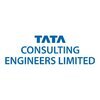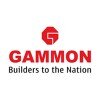
i
Afcons Infrastructure
Proud winner of ABECA 2024 - AmbitionBox Employee Choice Awards
Filter interviews by
Afcons Infrastructure Graduate Engineer Trainee (Get) Interview Questions and Answers
Afcons Infrastructure Graduate Engineer Trainee (Get) Interview Experiences
2 interviews found
I applied via campus placement at Vellore Institute of Technology (VIT) and was interviewed before Aug 2019. There were 4 interview rounds.
Interview Questionnaire
2 Questions
- Q1. I was selected from campus placement. There were 4 rounds. 1) technical round. Mostly from soil, concrete, steel structures. 2) aptitude test. 3) interview with company members. 4) HR interview.
- Q2. In interview i was asked various question like difference between various process of making cement. 2) what are various sections of road. 3) some soil engineering questions. 4) some questions from fluid me...
Interview Preparation Tips
I applied via campus placement at Vellore Institute of Technology (VIT) and was interviewed before Aug 2019. There were 4 interview rounds.
Interview Questionnaire
1 Question
- Q1. 1) difference between process in making cement. 2) what are the various sections of roads. 3) some questions from fluid and soil.
- Ans.
Questions related to cement production, road sections, fluid and soil.
Cement production involves crushing, grinding, mixing, and heating of raw materials to form clinker.
The clinker is then ground with gypsum to form cement.
Road sections include carriageway, shoulder, median, and drainage.
Fluid questions may include Bernoulli's equation, Reynolds number, and fluid properties.
Soil questions may include soil classificati
Interview Preparation Tips
Interview questions from similar companies

Graduate Engineer Trainee (Get) Interview Questions & Answers
KEC Internationalposted on 9 Mar 2024
(2 Questions)
- Q1. How many brickes need in 1m3
- Ans.
The number of bricks needed in 1m3 depends on the size of the bricks being used.
The number of bricks in 1m3 will vary based on the size of the bricks. Standard brick size is 190mm x 90mm x 90mm.
For standard size bricks, approximately 500 bricks are needed in 1m3.
To calculate the number of bricks needed, divide the volume of 1m3 by the volume of one brick.
- Q2. Fos for concrete
- Ans.
Fos is a type of admixture used in concrete to improve its workability and durability.
Fos is a water-reducing admixture that helps in reducing the water content in concrete mixtures.
It improves the workability of concrete, making it easier to place and finish.
Fos also enhances the durability of concrete by reducing permeability and increasing strength.
Examples of Fos for concrete include polycarboxylate-based admixture

(1 Question)
- Q1. Core questions related to iron and steel making
Interview Preparation Tips

Graduate Engineer Trainee (Get) Interview Questions & Answers
Nagarjuna Construction Companyposted on 19 Dec 2023
I applied via Job Portal and was interviewed in Jun 2023. There were 2 interview rounds.
(1 Question)
- Q1. Difference between true power and reactive power
- Ans.
True power is the actual power consumed by a device, while reactive power is the power required to establish and maintain the electromagnetic fields in an AC circuit.
True power is measured in watts (W) and represents the actual energy consumed by a device.
Reactive power is measured in volt-amperes reactive (VAR) and represents the power required to establish and maintain the electromagnetic fields in an AC circuit.
True...
(1 Question)
- Q1. Sallry accepted

Graduate Engineer Trainee (Get) Interview Questions & Answers
Simplex Infrastructuresposted on 29 Jul 2022
I applied via campus placement at Meghnad Saha Institute of Technology, Kolkata and was interviewed in Aug 2022. There were 2 interview rounds.

(4 Questions)
- Q1. Draw BMD & SFD of a Simply Supported Beam shown to my screen. Draw it & show that on screen.
- Ans.
The candidate is asked to draw the BMD & SFD of a Simply Supported Beam shown on the screen.
Identify the support conditions of the beam (simply supported in this case)
Determine the loads acting on the beam and their positions
Calculate the reactions at the supports
Draw the Bending Moment Diagram (BMD) and Shear Force Diagram (SFD) based on the calculated values
Label the diagrams with appropriate values and units
- Q2. What are the values of Compressive & Tensile Shear Stress on a Singly Reinforced Beam in LSM method?
- Ans.
Compressive shear stress is zero while tensile shear stress is equal to the shear force divided by the cross-sectional area of the beam.
Compressive shear stress is zero in a singly reinforced beam according to the Limit State Method (LSM).
Tensile shear stress is calculated by dividing the shear force by the cross-sectional area of the beam.
For example, if the shear force acting on the beam is 10 kN and the cross-sectio...
- Q3. Some other civil engineering questions.
- Q4. Introduce Yourself. This is 1st Question.
Interview Preparation Tips

Graduate Engineer Trainee (Get) Interview Questions & Answers
Tata Projectsposted on 25 Nov 2022

Civil engineering questions based on basics concepts , some aptitude and english questions ,grammer test
(2 Questions)
- Q1. Characteristics of slump test? bridge questions some questions on steel structure and water resource? process of concreting ? role of steel plates?
- Q2. Tell me about yourself
Interview Preparation Tips

Graduate Engineer Trainee (Get) Interview Questions & Answers
Shapoorji Pallonji Groupposted on 19 Nov 2021
Interview Questionnaire
10 Questions
- Q1. 1. Tell me about yourself?
- Q2. 2.Why do you want to join us?
- Q3. 3.What job role do you expect?
- Q4. What is bleeding?
- Ans.
Bleeding is the process of removing excess air from a hydraulic system.
Bleeding is necessary to ensure proper functioning of hydraulic systems.
It involves removing air bubbles from the system by opening valves or using a vacuum pump.
Bleeding is commonly done in brake systems to ensure proper braking performance.
It can also be done in cooling systems to prevent overheating.
Bleeding is important to prevent damage to the
- Q5. What is segregation?
- Ans.
Segregation refers to the separation of different components or materials from a mixture.
Segregation can occur due to differences in size, density, or shape of the components.
Examples of segregation include the separation of oil and water in a mixture, or the separation of different sized particles in a granular material.
Segregation can have negative effects on the quality and consistency of a product, such as in the c...
- Q6. What is workability of concrete?
- Ans.
Workability of concrete refers to its ease of mixing, placing, and compacting.
Workability is a crucial property of concrete that affects its strength, durability, and appearance.
It is influenced by factors such as water-cement ratio, aggregate size and shape, and admixtures.
Concrete with good workability can be easily placed and compacted without segregation or bleeding.
Various tests such as slump test, flow test, and ...
- Q7. What is W/c ratio? How can we improve concrete without changing w/c ratio? ( Ans: By adding admixture, superplaticizer)
- Ans.
W/c ratio is the ratio of water to cement in concrete. Admixtures like superplasticizer can improve concrete without changing w/c ratio.
W/c ratio is a crucial factor in determining the strength and durability of concrete.
It is the ratio of the weight of water to the weight of cement used in the mix.
A lower w/c ratio means stronger and more durable concrete.
Admixtures like superplasticizer can improve workability, reduc...
- Q8. Questions based on Projects and Internship!
- Q9. Do you want to relocate?
- Q10. Higher studies?
Interview Preparation Tips

Graduate Engineer Trainee (Get) Interview Questions & Answers
KEC Internationalposted on 4 Apr 2022
(1 Question)
- Q1. Difference between generator and transformer
- Ans.
Generators convert mechanical energy into electrical energy while transformers change the voltage level of electrical energy.
Generators produce electrical energy while transformers change the voltage level of electrical energy.
Generators convert mechanical energy into electrical energy while transformers do not.
Generators have a rotating part while transformers do not.
Examples of generators include hydroelectric genera...
Interview Preparation Tips
Very supportive
Skills evaluated in this interview

I applied via campus placement at National Institute of Technology (NIT), Silchar and was interviewed in Jan 2023. There were 4 interview rounds.

Apptitude+technical test easy questions basics only
(2 Questions)
- Q1. Technical interview questions from your project and your subject of interest as I from geotechnical engineering so mainly from soil mechanics.
- Q2. Tell me about yourself Tell me about your project Spt test? Earth pressure? Settlement? Is codes
(1 Question)
- Q1. Just 10 mins introduction and simple hr questions
Interview Preparation Tips
- Geotech
Afcons Infrastructure Interview FAQs
Some of the top questions asked at the Afcons Infrastructure Graduate Engineer Trainee (Get) interview -
Tell us how to improve this page.
Afcons Infrastructure Interviews By Designations
- Afcons Infrastructure Senior Engineer Interview Questions
- Afcons Infrastructure Planning Engineer Interview Questions
- Afcons Infrastructure QA QC Engineer Interview Questions
- Afcons Infrastructure Civil Engineer Interview Questions
- Afcons Infrastructure Civil Execution Engineer Interview Questions
- Afcons Infrastructure Civil Foreman Interview Questions
- Afcons Infrastructure Site Engineer Interview Questions
- Afcons Infrastructure Store Keeper Interview Questions
- Show more
Interview Questions for Popular Designations
- Graduate Apprentice Trainee Interview Questions
- Graduate Trainee Interview Questions
- Graduate Apprenticeship Trainee Interview Questions
- Graduate Engineer Interview Questions
- Production Graduate Engineer Trainee Interview Questions
- Graduate Student Interview Questions
- Graduate Apprentice Interview Questions
- Post Graduate Engineer Trainee [pget] Interview Questions
- Show more
People are getting interviews through
Graduate Engineer Trainee (Get) Interview Questions from Similar Companies
Fast track your campus placements

Afcons Infrastructure Graduate Engineer Trainee (Get) Reviews and Ratings
based on 6 reviews
Rating in categories
|
Senior Engineer
434
salaries
| ₹5 L/yr - ₹18 L/yr |
|
Planning Engineer
199
salaries
| ₹4.5 L/yr - ₹12 L/yr |
|
Civil Engineer
186
salaries
| ₹2.4 L/yr - ₹10 L/yr |
|
Executive Engineer
171
salaries
| ₹3.5 L/yr - ₹11.9 L/yr |
|
Engineer
162
salaries
| ₹3.5 L/yr - ₹11 L/yr |

Larsen & Toubro Limited

Tata Projects

Shapoorji Pallonji Group

GAMMON INDIA
Calculate your in-hand salary
- Home >
- Interviews >
- Afcons Infrastructure Interview Questions >
- Afcons Infrastructure Graduate Engineer Trainee (Get) Interview Questions













